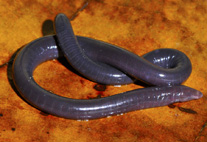Abstract
The systematics of the hermit crab genus Pagurus is complex, with a long history of taxonomic rearrangements. This group, with worldwide distribution, encompasses a large number of morphologically heterogeneous species. A total of 173 currently recognized species have been morphologically organized into 11 informal groups, in attempts to establish internal stability. This arrangement and the relationships among species of each informal group have remained obscure and have never been evaluated from a molecular phylogenetic viewpoint. Attempts to resolve these high-level classifica-tion problems have been restricted to morphological studies, with no satisfactory results because of the extensive overlap of the characters used. We evaluated the phylogenetic position of some of these informal groups of species of Pagurus occurring along the Pacific and Atlantic coasts of South America, using partial fragments of two molecular markers (16S mtDNA and Histone 3 nDNA). Our results indicated a clear polyphyletic arrangement of Pagurus; at the same time, the internal clades fit perfectly with pre-established informal morphological groups from South America, which may warrant a formal taxonomic subdivision of the genus. Additionally, the species belonging to the “provenzanoi group” clearly fit within a different taxon and should be reviewed. Also, the presence of the genus Propagurus in the ingroup could be in-terpreted by non-exclusive hypotheses: from one point of view, the genus Propagurus is nested within Pagurus, and the-refore Pagurus is not valid as currently composed; or possibly, that more than one genus should be recognized among the South American species presently assigned to Pagurus. This latter perspective accords with the proposal to restrict Pagu-rus to only a few species.

